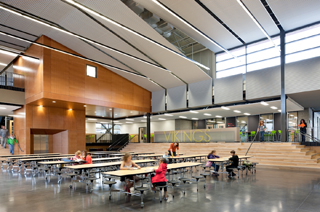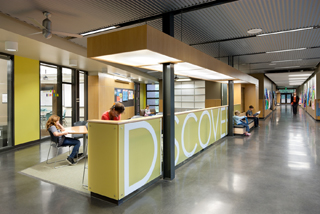|
Subscribe / Renew |
|
|
Contact Us |
|
| ► Subscribe to our Free Weekly Newsletter | |
| home | Welcome, sign in or click here to subscribe. | login |
Construction
| |
 |
August 23, 2012
School contractors face new scrutiny from taxpayers
Skanska

Toher
|
Contractors for K-12 construction projects have always faced the challenge of balancing budgets with the demand for quality learning environments. Many school districts around Washington state have been faced for some time with growing populations and aging facilities that no longer meet student needs.
The current economic environment is putting a strain on budgets like never before. Timelines to complete school projects have always been major considerations since schools depend on new spaces being available on time.
Scrutiny has always been high on contractors, but the economy means every public dollar is being watched. It’s in this challenging environment that contractors are asked to deliver high-quality educational facilities. As a result, contractors must effectively manage public dollars and expectations of all stakeholders involved.
GC/CM delivery
With many counties facing budget cuts, school officials must look for construction methods that are cost efficient and produce top-notch structures that can be delivered on time and on budget. A common approach used by Skanska for K-12 projects is the general contractor/construction management (GC/CM) approach.
In the GC/CM approach, the architect and the general contractor are retained under two separate contracts. The contractor is brought into the team early in the design process to advise both the designer and school district on budget, schedule, phasing and constructability issues.
As the design nears completion, the general contractor bids the work to the market and provides the district with a maximum construction cost for the new facility. As general contractors, we have significant input into the design, constructability and phasing, and as a result we can provide predictable time and cost outcomes for the district.
This is vital. The client is the school district, but taxpayers are watching. They expect the contractor to use public money wisely.
In fact, stakeholders in K-12 projects often include school officials, staff, parents, students and residents. The contractor must consider the interests of all involved and make a concerted effort to ensure all parties are kept abreast of construction progress and decision making.
School projects
At Meadowdale Middle School in the Edmonds School District, Skanska used the GC/CM approach to construct a 93,000-square-foot classroom building and renovate parking, bus circulation and an existing sports field. The short project timeline required that construction begin on phase one before design was completed for phase two.
This caused the challenge of ensuring all equipment, hardware and finishes matched across all project phases, while keeping pricing competitive and preventing sole-sourcing of materials for the second phase. The end result was a building that met budget and timeline expectations, and employed a limited number of products and systems, easing maintenance for years to come.
For a Vashon Island High School addition and renovation currently under way, Skanska has been tasked with canvassing the market for the best price on materials and retaining local subcontractors.
The timeline for Vashon High School requires that the school remains open to students and staff while new space is built for services including administration, an auditorium, library, kitchen and commons. A significant effort was made to involve subcontractors from the island, helping to keep some of the money spent by Vashon Island on Vashon Island.
As we break ground on Carter Lake Elementary School and Hillside Elementary School, both located on Joint Base Lewis-McChord, similar efforts will take place. The new facilities, totaling 132,000 square feet, are major investments for the community. The community will need to know it’s getting what it hoped for.
K-12 construction requires a careful balance of overseeing public dollars and managing stakeholder expectations. The keys to success include choosing the right partners and delivery method, and keeping lines of communication open with the community.
We must always remember the responsibilities we have to a community — and its dollars — when a project affects so many facets of everyday life. Nothing captures that need more than school projects.
Chris Toher is Skanska’s executive vice president and general manager. Toher has more than 15 years of GC/CM experience.
Other Stories:
- 5 tips to help districts with their long-range plans
- UW’s Mercer Court aims to keep students socially connected
- Skills centers making inroads in Washington
- Schools can stretch facilities budgets by embracing technology
- Laser scanning: a powerful tool for school projects
- Portables aren’t the last word in modular schools
- Schools face pressure to keep up with tech trends
- Online learning will have lasting effect on campus spaces




